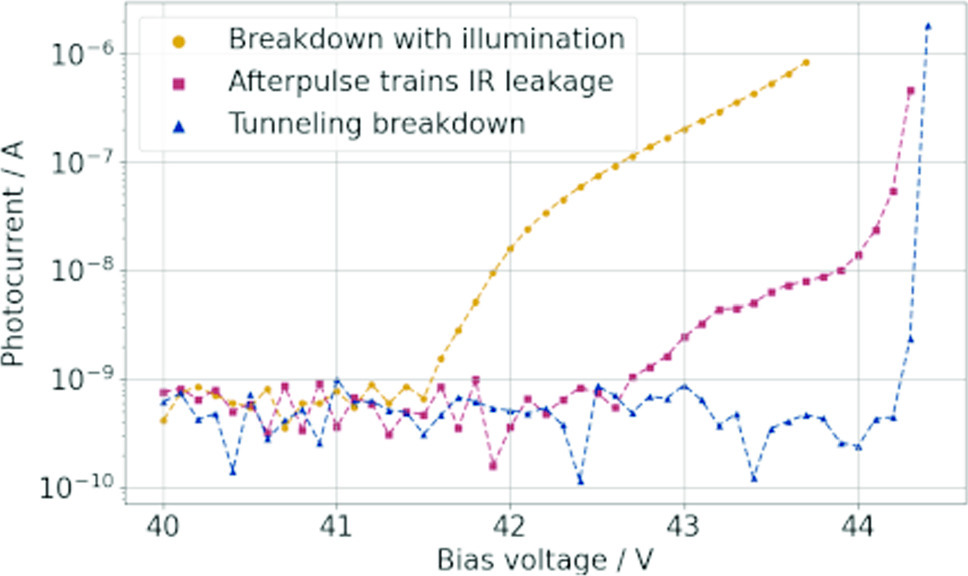https://doi.org/10.1140/epjd/s10053-025-01034-6
Regular Article – Cold Matter and Quantum Gases
Performance of silicon photomultipliers from room temperature to below 200 mK
Department of Physics and Astronomy, University of Turku, Vesilinnantie 5, 20014, Turku, Finland
Received:
9
January
2025
Accepted:
26
June
2025
Published online:
25
July
2025
We present experimental results of characterization of Silicon photomultipliers (SiPM) in a temperature range from 90 mK to 40 K and compare them to room-temperature results. Two SiPMs, one from ONSEMI and one from Hamamatsu Photonics, were tested. Operating voltage ranges, dark count rates, afterpulsing effects and photon detection efficiencies (PDE) were determined with illumination by 275- and 470-nm light fed into the cryostat via an optical fiber. A cryogenic shutter provided a true dark condition, where thermal radiation from room temperature is shielded and the thermal excitations in the chips are frozen. A second tunneling breakdown was observed at this condition, which substantially limits the operating voltage range for the temperatures 20–30 K. Below  5 K, both SiPMs recover to an operating overvoltage range of 3–5 V. We found the chips function through the entire tested temperature range and are capable of withstanding thermal cycling with no major performance degradation.
5 K, both SiPMs recover to an operating overvoltage range of 3–5 V. We found the chips function through the entire tested temperature range and are capable of withstanding thermal cycling with no major performance degradation.
© The Author(s) 2025
 Open Access This article is licensed under a Creative Commons Attribution 4.0 International License, which permits use, sharing, adaptation, distribution and reproduction in any medium or format, as long as you give appropriate credit to the original author(s) and the source, provide a link to the Creative Commons licence, and indicate if changes were made. The images or other third party material in this article are included in the article’s Creative Commons licence, unless indicated otherwise in a credit line to the material. If material is not included in the article’s Creative Commons licence and your intended use is not permitted by statutory regulation or exceeds the permitted use, you will need to obtain permission directly from the copyright holder. To view a copy of this licence, visit http://creativecommons.org/licenses/by/4.0/.
Open Access This article is licensed under a Creative Commons Attribution 4.0 International License, which permits use, sharing, adaptation, distribution and reproduction in any medium or format, as long as you give appropriate credit to the original author(s) and the source, provide a link to the Creative Commons licence, and indicate if changes were made. The images or other third party material in this article are included in the article’s Creative Commons licence, unless indicated otherwise in a credit line to the material. If material is not included in the article’s Creative Commons licence and your intended use is not permitted by statutory regulation or exceeds the permitted use, you will need to obtain permission directly from the copyright holder. To view a copy of this licence, visit http://creativecommons.org/licenses/by/4.0/.





